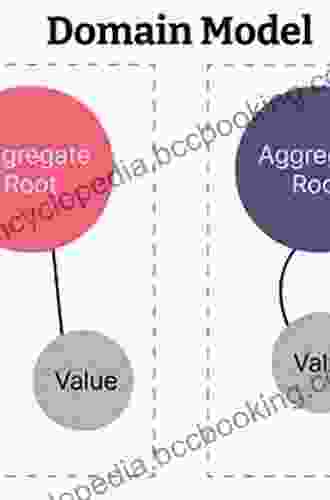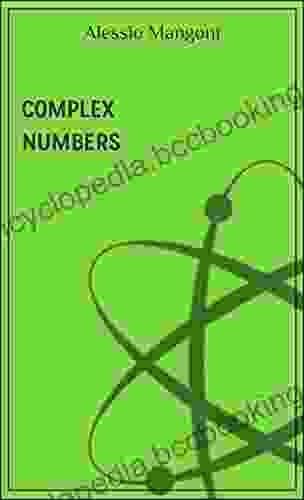Mastering Domain-Driven Design: A Comprehensive Guide to Implementing DDD

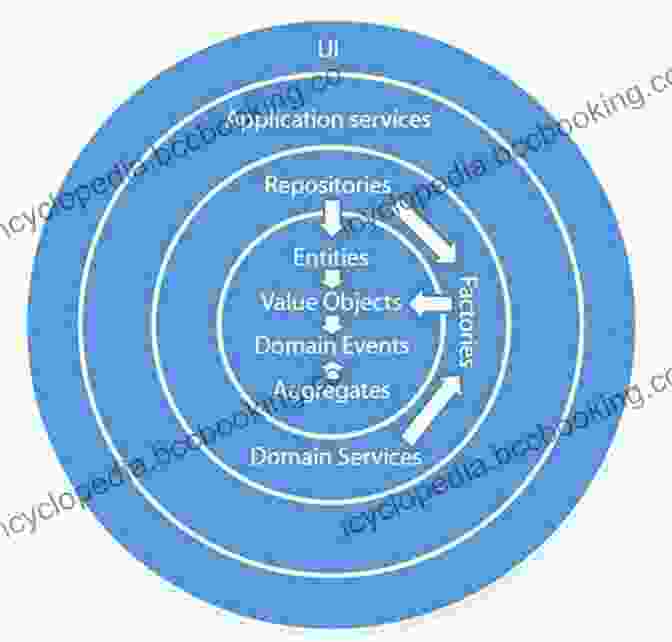
4.5 out of 5
| Language | : | English |
| File size | : | 41043 KB |
| Text-to-Speech | : | Enabled |
| Screen Reader | : | Supported |
| Enhanced typesetting | : | Enabled |
| Print length | : | 656 pages |
to Domain-Driven Design
Domain-Driven Design (DDD) is a software development approach that focuses on aligning the software's design with the business domain it represents. By modeling the domain in code, DDD enables developers to create highly cohesive and maintainable systems that accurately reflect the real-world business processes.
In this article, we will explore the core concepts, patterns, and best practices of DDD, providing you with a comprehensive guide to implementing DDD in your software development projects.
Key Concepts of DDD
- Domain Model: The domain model is the representation of the business domain in code. It consists of entities, value objects, aggregates, and bounded contexts.
- Entities: Entities are real-world objects that have a unique identity and well-defined behavior. They represent the core concepts of the business domain.
- Value Objects: Value objects are immutable objects that represent simple or primitive values. They do not have an identity and are used to represent data that is not essential to the business logic.
- Aggregates: Aggregates are groups of entities that are treated as a единый объект. They provide a way to encapsulate complex relationships between entities.
- Bounded Contexts: Bounded contexts are logical boundaries that define the scope of a domain model. They help to isolate different parts of the system and prevent interactions that could lead to inconsistencies.
DDD Patterns and Best Practices
- Repository Pattern: The repository pattern provides a unified interface for accessing data from a data source. It helps to abstract away the details of the data access layer and enforce business rules.
- Unit of Work Pattern: The unit of work pattern ensures that changes to objects are consistent before they are committed to the database. It helps to maintain data integrity and prevent concurrency issues.
- Event Sourcing: Event sourcing is a technique for storing changes to the domain model as a sequence of events. This approach provides a complete history of the system's state and enables easy replayability and debugging.
- Command-Query Responsibility Segregation (CQRS): CQRS is an architectural pattern that separates read operations (queries) from write operations (commands). This separation helps to improve performance and maintainability.
- Microservices: Microservices are small, independent, and loosely coupled services that can be deployed and scaled independently. DDD is a natural fit for microservices, as it provides a clear separation of concerns and promotes loose coupling.
Benefits of Implementing DDD
- Improved Communication: DDD provides a common language between business stakeholders and developers, reducing communication gaps and improving collaboration.
- Increased Maintainability: DDD promotes the development of highly cohesive and loosely coupled systems, making them easier to maintain and evolve.
- Enhanced Testability: DDD's focus on well-defined boundaries and patterns makes it easier to write testable code and identify potential bugs.
- Improved Performance: DDD's emphasis on data isolation and CQRS can help to improve performance, particularly in large and complex systems.
- Increased Flexibility: DDD's modular architecture and emphasis on bounded contexts make it easier to adapt to changing business requirements and integrate with other systems.
Domain-Driven Design is a powerful software development approach that can help you create highly maintainable, scalable, and flexible systems. By embracing the principles and best practices of DDD, you can align your software with the business domain and empower your teams to deliver high-quality software solutions.
To learn more about DDD, I recommend reading Implementing Domain-Driven Design by Vaughn Vernon. This comprehensive guide provides a detailed overview of the concepts, patterns, and best practices of DDD, with practical examples and case studies.
4.5 out of 5
| Language | : | English |
| File size | : | 41043 KB |
| Text-to-Speech | : | Enabled |
| Screen Reader | : | Supported |
| Enhanced typesetting | : | Enabled |
| Print length | : | 656 pages |
Do you want to contribute by writing guest posts on this blog?
Please contact us and send us a resume of previous articles that you have written.
 Book
Book Novel
Novel Page
Page Chapter
Chapter Text
Text Story
Story Genre
Genre Reader
Reader Library
Library Paperback
Paperback E-book
E-book Magazine
Magazine Newspaper
Newspaper Paragraph
Paragraph Sentence
Sentence Bookmark
Bookmark Shelf
Shelf Glossary
Glossary Bibliography
Bibliography Foreword
Foreword Preface
Preface Synopsis
Synopsis Annotation
Annotation Footnote
Footnote Manuscript
Manuscript Scroll
Scroll Codex
Codex Tome
Tome Bestseller
Bestseller Classics
Classics Library card
Library card Narrative
Narrative Biography
Biography Autobiography
Autobiography Memoir
Memoir Reference
Reference Encyclopedia
Encyclopedia Aileen Nielsen
Aileen Nielsen Alex Berenson
Alex Berenson Alberto Pian
Alberto Pian Alastair Campbell
Alastair Campbell Ahmet Zappa
Ahmet Zappa Alex Jennings
Alex Jennings A V Davina
A V Davina Adrian Wallwork
Adrian Wallwork 9th Edition Kindle Edition
9th Edition Kindle Edition Al Ewing
Al Ewing A B Decker
A B Decker Adam Sheppard
Adam Sheppard Alex Morgan
Alex Morgan Aleksandr Solzhenitsyn
Aleksandr Solzhenitsyn Abbie Hoffman
Abbie Hoffman Aldo A Quintana
Aldo A Quintana Ada Calhoun
Ada Calhoun Alais Winton
Alais Winton Adam Boduch
Adam Boduch Alan J Hesse
Alan J Hesse
Light bulbAdvertise smarter! Our strategic ad space ensures maximum exposure. Reserve your spot today!
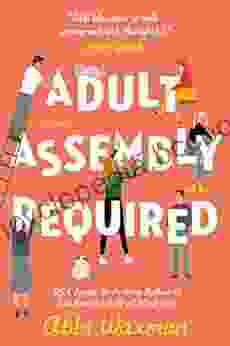
 Clinton ReedAdult Assembly Required: A Must-Read Novel That Captures the Complexities of...
Clinton ReedAdult Assembly Required: A Must-Read Novel That Captures the Complexities of...
 Salman RushdieThe Reanimation of American Myths and Symbols: A Journey Through the Cultural...
Salman RushdieThe Reanimation of American Myths and Symbols: A Journey Through the Cultural... Geoffrey BlairFollow ·7.8k
Geoffrey BlairFollow ·7.8k F. Scott FitzgeraldFollow ·2.1k
F. Scott FitzgeraldFollow ·2.1k Oscar WildeFollow ·8.8k
Oscar WildeFollow ·8.8k Galen PowellFollow ·7.7k
Galen PowellFollow ·7.7k Christopher WoodsFollow ·6.1k
Christopher WoodsFollow ·6.1k John SteinbeckFollow ·10.7k
John SteinbeckFollow ·10.7k Dwayne MitchellFollow ·12k
Dwayne MitchellFollow ·12k Ethan MitchellFollow ·7.9k
Ethan MitchellFollow ·7.9k

 Francis Turner
Francis TurnerArt and Politics in the Shadow of Music
Music has...
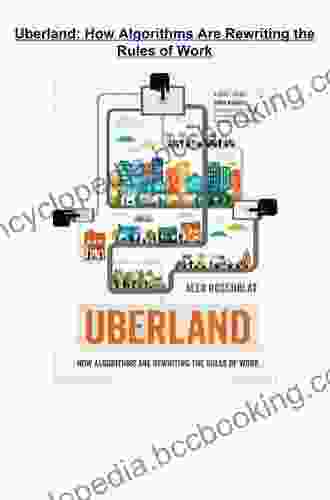
 Jaylen Mitchell
Jaylen MitchellHow Algorithms Are Rewriting The Rules Of Work
The workplace is...

 Chandler Ward
Chandler WardRio de Janeiro & Minas Gerais Footprint Handbooks:...
Embark on an extraordinary adventure through...

 David Mitchell
David MitchellThe Story of Depression: Understanding and Treating a...
Delving into the Shadows of...

 Al Foster
Al FosterStatistics Done Wrong: The Woefully Complete Guide
Tired of being...

 DeShawn Powell
DeShawn PowellJulia Child's Second Act: A Tale of Triumph,...
Julia Child is an...
4.5 out of 5
| Language | : | English |
| File size | : | 41043 KB |
| Text-to-Speech | : | Enabled |
| Screen Reader | : | Supported |
| Enhanced typesetting | : | Enabled |
| Print length | : | 656 pages |


